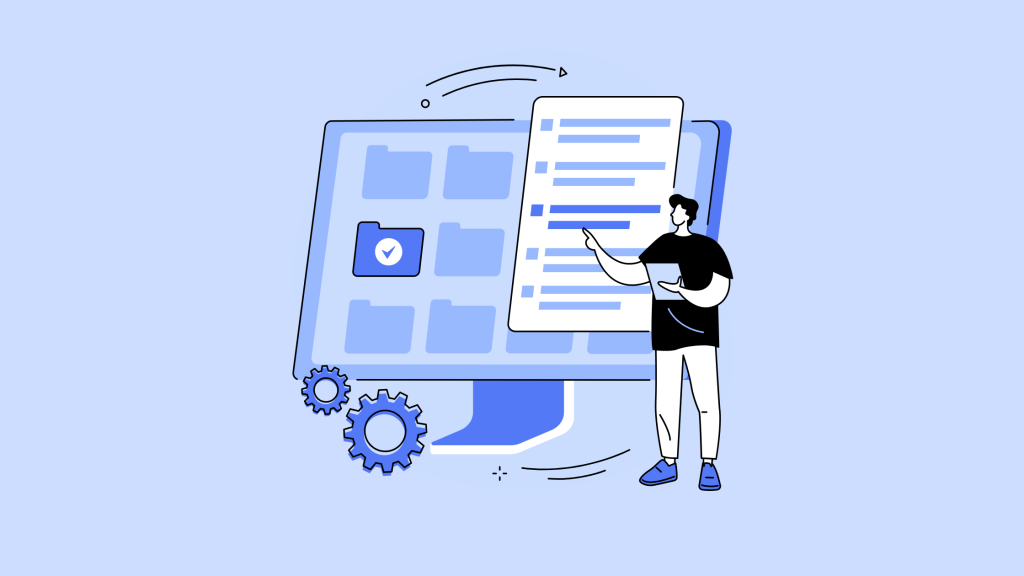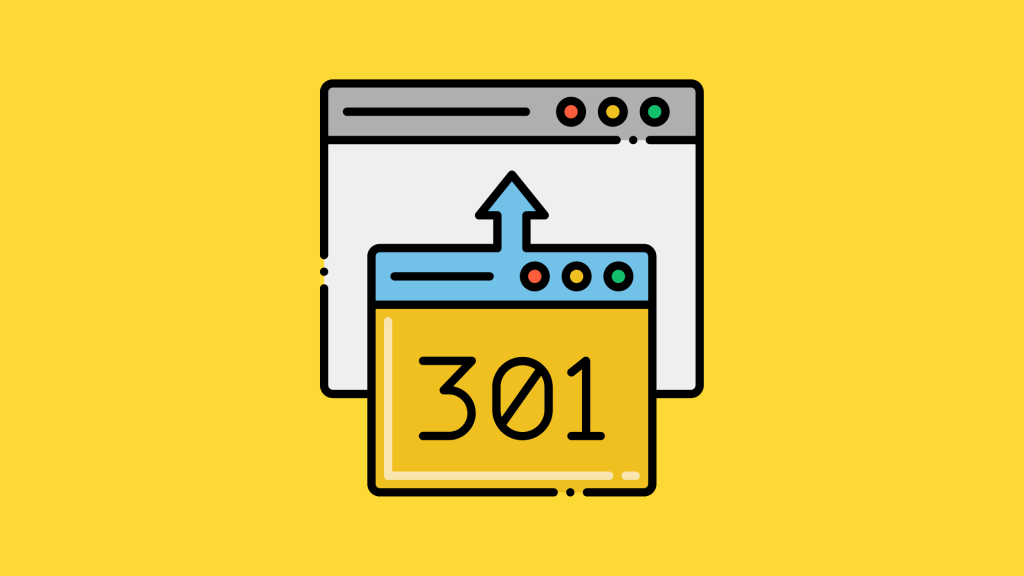SEO Guide to Find and Fix Broken Links
Table of Contents
Developing a website requires a significant investment of time and resources. A critical component of this investment is the creation of a valuable resource for your visitors. However, these efforts might be compromised if the linking structure within your website become dysfunctional.
These links become broken links that can have a negative impact on the quality of your website and hinder your ability to convert visitors into valued customers.
Fortunately, there are several proactive measures to mitigate this potential pitfall. This blog post serves as a comprehensive guide, outlining a step-by-step process for identifying and rectifying broken links across your entire website.
Before we embark on this journey of link optimization, let us first delve deeper into the nature of broken links and explore the rationale behind their remediation.
What are Broken Links?
Broken links, also known as non-functional links, occur when a hyperlink fails to direct users to the intended webpage. This can happen with any type of link, including backlinks, internal links, or external links. The likelihood of broken links increases with the number of contributors maintaining a website and its overall size.

There are several reasons why links can become broken:
1. Target Page Disruptions: A frequent culprit is the deletion or relocation of the target page without updating the corresponding link. Deleted pages lead to “404 Not Found” errors, leaving users frustrated and confused.
2. URL Formatting Errors: An incorrectly formatted URL can result in a “400 Bad Request” error. This occurs when the requested URL itself is malformed, often due to typos or misspellings entered when creating the link. The server cannot understand the request due to the invalid format and rejects it with a ‘400’ error message.
3. Website Structure Changes: Hard coded links containing the full URL can break if the website’s structure or URL scheme undergoes modifications. Imagine a page relocated from “/products” to “/store/products.”
Outdated hardcoded links pointing to “/products” will lead to 404 errors since the page now resides at the new location under “/store.” Such outdated links become “dead ends” for users.
4. Broken Image Links: Links directing users to images can also break when the image files are deleted or moved without updating the corresponding HTML code. The link itself might still be present, but it points to a non-existent image file, creating a broken link.
5. External Website Changes: Outbound links to external sites that have undergone redesign, retirement, or migration can also break. “502 Bad Gateway” errors indicate the server for an external site cannot be located.
Websites naturally evolve over time: domains change, re-branding occurs, or sites cease to operate altogether. If internal links remain unchanged despite these external transitions, they will continue pointing users to broken URLs.
6. Plugin Issues: Links embedded within third-party plugin code can break if the external platforms they rely on modify their code structure. Clicking a broken “Like” button, for instance, might result in a 404 error instead of allowing users to share content.
This happens because your website might still utilize outdated code, while the external platform’s servers now expect a different code format for the plugin to function properly.
By understanding these causes, you can proactively identify and fix broken links on your website, ensuring a smooth user experience and maximizing the effectiveness of your online presence.
Why is it important to fix broken links?
While a single broken link might seem inconsequential, the cumulative effect of multiple broken links can be detrimental to your SEO efforts in several ways:
1. Broken links affect user experience
Broken links disrupt the user journey. When a user clicks on a link expecting valuable information or a relevant resource, only to be greeted by an error message, frustration sets in. This not only reflects poorly on your website’s professionalism, but also increases the likelihood of users abandoning your site altogether.
2. Broken links harm your credibility and authority
Broken links can create the impression of a website that is outdated, poorly maintained, or lacking in authority. This perception can damage your brand reputation and make it difficult to establish yourself as a trusted source of information.The presence of broken links sends the opposite signal, potentially lowering your website’s ranking.
3. Broken links affect conversion and sales
If your website relies on conversions to generate leads or sales, broken links can act as a barrier to achieving your goals. For instance, a broken link on a product page can prevent users from completing a purchase, leading to lost revenue. Similarly, broken links on call-to-action buttons can discourage users from taking the desired action, hindering your conversion rate.
4. Broken links hurt your SEO efforts
Search engines rely on well-structured websites with clear pathways for users and search engine crawlers to navigate. Broken links create disruptions in these pathways, making it more difficult for search engine crawlers to efficiently index your website’s content.
Furthermore, search engines may penalize websites with a high number of broken links, considering them to be of lower quality or relevance. This can lead to a significant drop in your website’s search engine ranking, making it harder for potential customers to find you.
How to identify broken links?
To identify broken links in your website, both manually and tools-driven methods are available. However, it is completely your choice which one should you choose to manage those links and fix them afterwards.
1. Manual Monitoring of Links
This traditional method involves manually each webpage and verifying the functionality of all internal links. While offering a comprehensive assessment, this approach becomes increasingly time-consuming and impractical for large websites with extensive page counts. The sheer volume of pages renders manual verification an inefficient solution for most website administrators.

2. Utilizing online tools
Fortunately, several technological solutions exist to streamline the process of identifying broken links.These tools offer scalability and efficiency, making them ideal for websites of all sizes.
- Chrome Developer Tools: By right-clicking on a webpage and selecting “Inspect,” the Console tab within Chrome’s Developer Tools can highlight any broken internal links resulting in 404 errors.
- Google Search Console: This platform allows you to directly identify all 404 error pages within your website’s domain. The presence of a ‘404’ error page often signifies a malfunctioning internal link directing users to a non-existent page.
- Google Analytics: The recent GA4 update includes an automated feature that tracks 404 error responses. This data is accessible through the Pages and Screens report, enabling you to directly search for error pages.

3. Third-Party SEO Tools
Several popular SEO tools, including RanksPro, Screaming Frog, SEMrush, and Ahrefs, offer features specifically designed to detect and address broken link issues. Integrating these tools into your SEO strategy streamlines the identification process and ensures your website remains free from disruptions caused by broken links.

4. Content Management System Solutions
Content Management Systems (CMS) like WordPress and Drupal often provide built-in solutions or supported plugins and modules for identifying broken links. These plugins seamlessly integrate with theCMS platforms, offering a user-friendly experience and eliminating the need for extensive development expertise to maintain optimal SEO health for your website.

By employing these strategies, you can effectively identify and rectify broken links, ensuring a seamless user experience and optimizing your website’s search engine ranking.
How to fix broken links in a website?
Now that you know how to find broken links in your website, it’s important to fix them with the appropriate methods.
1. Streamline Broken Links to Fix on Priority
Not all broken links require immediate repair. While they can certainly disrupt the user experience, a custom 404 error page can be sufficient for lower-priority pages. These custom pages, when designed effectively, communicate that the requested page is no longer available and provide users with alternative navigation options.

According to Google’s Search Quality Guidelines, pages featuring informative 404 error messages are often regarded as “medium quality” due to their user-centric approach.It’s crucial to address broken links on your website; however, we recommend prioritizing those that impact critical pages and the overall user experience.
Utilize Google Search Console to identify error pages on your site. Crawl errors of this nature can prevent Google from properly indexing valuable pages that you want to be discoverable in search results. Analyzing this report allows you to prioritize which links are most important to rectify.
2. Updating or Replacing the URLs
If the target page still exists but with a new URL, you can update the internal links to reflect the new location.
Here are a few methods to accomplish this:
- Bulk URL Updates: Many Content Management Systems (CMS) like WordPress offer built-in search and replace functionalities. Utilizing these tools allows you to efficiently update all instances of the old URL with the new one across your website.
- Manual Link Updates: For individual pages, you can manually edit the text or image link to point to the new URL. Remember to double-check for additional occurrences of the old link on the same page.
- Navigation Menu Updates: When linking to pages within your navigational menus, update the target URL within your menu builder or editor if the page URL has undergone a change.

3. Implement Redirections
For broken pages that have been permanently moved or deleted, implement 301 redirects to direct visitors to relevant new pages. 301 redirects inform search engines that content has been permanently relocated and pass link authority to the new URL.

Employing 301 redirects for broken links enhances the user experience by directing users to a relevant new page instead of a frustrating 404 error page.
eSearch Logix’s Expertise in Finding &Fixing Broken Links
In conclusion, broken links can significantly hinder your website’s user experience and SEO performance. By following the steps outlined in this guide, you can effectively identify, prioritize, and rectify broken links on your website.
Remember, a user-centric approach is key: prioritize fixing links leading to crucial pages and utilize informative 404 error pages for lower-priority ones.
Here at eSearch Logix, we understand the importance of maintaining a healthy and optimized website. We leverage best practices for managing broken links, including:
- Regular Broken Link Audits: We conduct regular website SEO audits to proactively identify broken links before they impact user experience or SEO.
- Data-Driven Prioritization: By analyzing crawl data and user behavior, we prioritize fixing broken links that have the most significant impact on your website’s performance.
- Efficient Link Repair Strategies: Our team utilizes a combination of manual editing, bulk updates, and 301 redirects to ensure a smooth and efficient broken link repair process.
By implementing these strategies, eSearch Logix can help you maintain a website free of broken links, enhancing user experience and improving your website’s ranking in search engine results.
If you’re looking for expert assistance in managing your website’s broken links, contact eSearch Logix today! We’ll be happy to discuss how our SEO expertise can help you achieve your website’s goals.







